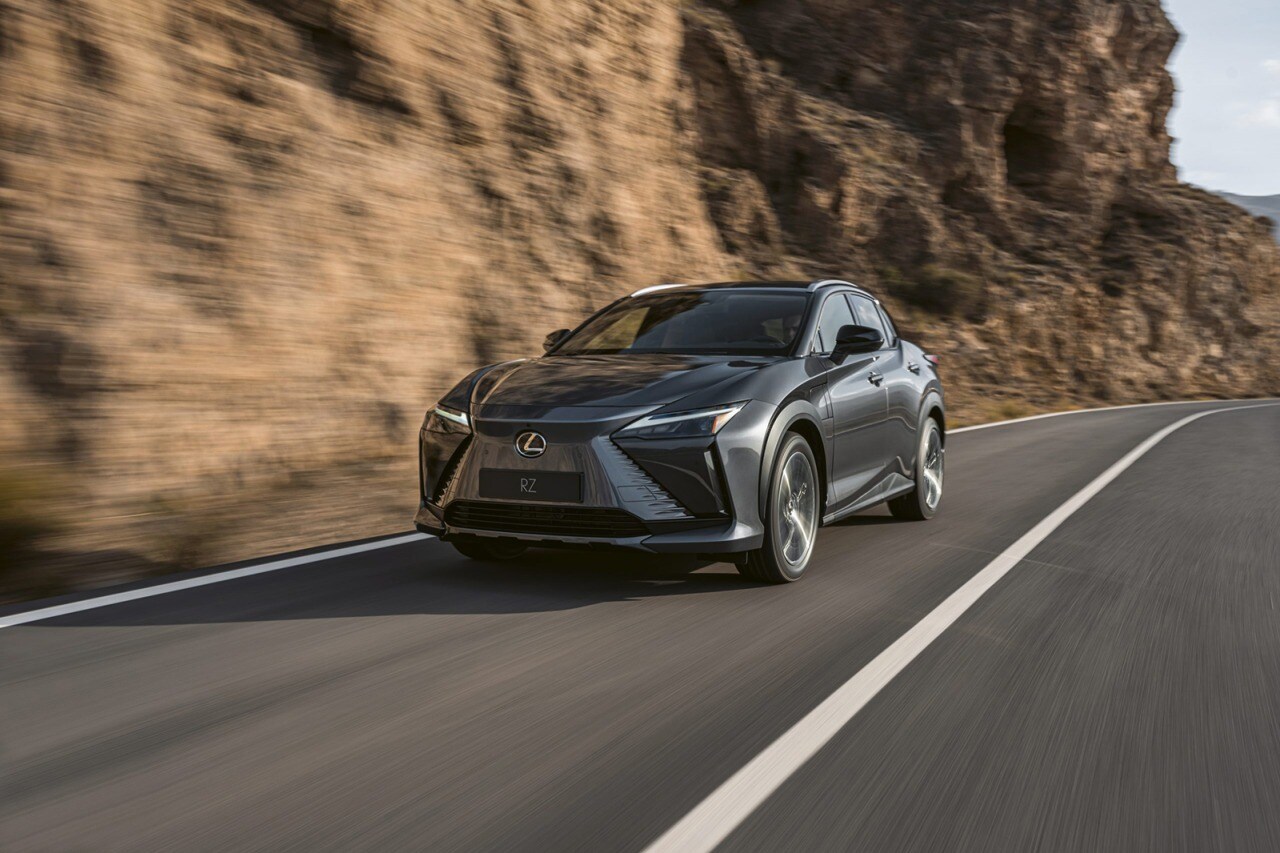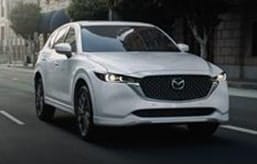- Lexus' first electric vehicle sold in the U.S.
- A small crossover roughly the size of an NX and based on the Toyota bZ4X
- 225 miles of all-electric range
- Launches the first RZ generation for 2023
The 2023 Lexus RZ 450e Will Be the Automaker's First EV Sold in the U.S.
But with only 225 miles of range, who's this for?
What is the Lexus RZ 450e?
Lexus has been lagging in the electric space. Since Lexus and its parent company, Toyota, sell hundreds of thousands of hybrids a year, you'd think these automakers would be all over electric vehicles, but that hasn't been the case until now. Toyota's bZ4X broke cover late last year, and now it's that car's more posh sibling turn to take a bow. Meet the 2023 Lexus RZ 450e, the brand's first globally available EV.
The RZ 450e rides on the same e-TNGA platform that underpins the Toyota bZ4X and Subaru Solterra, but in true Lexus fashion, it aims to elevate the level of comfort and luxury offered by those two. Unlike the Toyota and Subaru, which have exterior and cabin designs distinct from other vehicles in their respective automakers' lineups, the RZ looks like a typical Lexus SUV — it just happens to be electric. It has an hourglass-shaped grille, squinty headlights and proportions that are quite similar to those of the recently redesigned NX, but it's slightly longer, lower and wider overall.
Lexus is clearly taking on the Tesla Model Y with its new premium EV crossover. But it will also have to face the Ford Mustang Mach-E, Audi Q4 e-tron, Volvo XC40 Recharge and the upcoming electric Porsche Macan in the battle for small luxury EV supremacy.
What is the RZ's range?
The RZ 450e features two electric motors, one on each axle, that are powered by a 71.4-kWh battery pack. Lexus says the RZ's front motor will make 201 horsepower and the rear motor will produce 107 hp. That's a major step up from the bZ4X and Solterra, which use twin 107-hp motors in their all-wheel-drive configurations.
As for range, Lexus says the RZ will go 225 miles on a single charge, as long as you opt for the smaller 18-inch wheels. The larger 20s will likely sap more range and bring that figure down a touch. If 225 miles on a single charge seems like a middling figure in 2022, you'd be right. There are half a dozen other EV crossovers from the likes of Ford, Kia, Hyundai, Chevrolet, Tesla, Volkswagen and Audi that will cover more ground than this Lexus. However, as our real-world EV range tests have proven time and again, EVs often go farther than their EPA estimates suggest, so maybe the RZ 450e will be an overachiever. We'll find out when the electrified Lexus goes on sale toward the end of the year.
How's the RZ's interior?
While the RX 450e has a passing resemblance to the NX on the outside, you might be struck by déjà vu on the inside. The RZ's cabin is almost a carbon copy of the NX's, featuring the same instrument cluster and 14-inch infotainment screen. The biggest difference between the two crossovers will come at some unspecified date later this year, and it's the RZ's new optional steering wheel.
Like the Tesla Model S and Model X, the RZ will be available with a yoke — a steering wheel without an upper section — but Lexus says its approach is different to Tesla's. This yoke will have a much higher steering speed, made possible by a steer-by-wire system. Essentially, smaller inputs will result in bigger movements from the front tires, hopefully eliminating the hand-over-hand flailing we've experienced in the new Model S. However, this is the second time an automaker has literally tried to reinvent the wheel, and we can only hope Lexus' solution is better executed than Tesla's in real life.
Edmunds says
It's about time Lexus got in on the EV game, but we aren't sure if the RZ 450e will be more appealing than a Model Y or any of the other EVs that are already on sale from other legacy automakers. Stay tuned for our full driving impressions and whether the RZ 450e is worth taking over its competition.
Am I Ready for an EV?
- EV ownership works best if you can charge at home (240V outlet)
- Adding a home charging system is estimated to cost $1,616 in
- Edmunds is partnering with Treehouse, an independent provider of home EV installation services. Learn more about the installation services partnership



 by
by